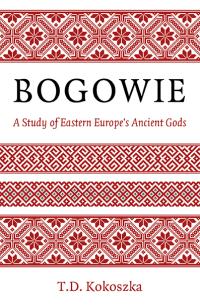T.D. Kokoszka
Born in 1990, T.D. Kokoszka grew up in a household in Austin TX with a Jewish mother and a Polish-American father. While he was aware of roots going back to Eastern Europe from both families, he did not initially learn very much about them. He knew that Polish people would whack one another with palm leaves around Easter, and he knew that his great-grandmother purportedly believed in forest spirits known as "borowy." However, it wasn't until he was in his teens that he became vaguely aware of an ancient people known as the "Slavs" who gave rise to the Polish, Ukrainian, Russian, Serbian, Bulgarian, Slovakian, Slovene, and Czech languages. It quickly became clear to him that this was a family of cultures currently under-represented in popular culture, and even in western scholarship.
The author studied Microbiology at Texas State, and graduated in 2013 with a B.S. in Microbiology. However, he used his time at Texas State to research leading scholars like Vernadsky and Ivanits on the topic of Slavic history. During this time, he also cultivated connections with ADF (Arn Draiocht Fein) and utilized their research-oriented methodology for his own purposes. ADF is a Celtic pagan organization first and foremost, although T.D. Kokoszka is part of a Slavic "Kin" or subgroup of this organization. This book is heavily influenced by the ADF emphasis of Indo-European cross-cultural studies.
As a half-jewish man, the author does hope to combat the more ethnocentric interpretations of Slavic paganism. He also believes that the scholarship on the topic today is insular and often outdated. By that, he means to argue nationalists from each Slavic country tend to take a narrow view of their own culture without reviewing the entire body of Eastern European folklore in its proper context.
Finally, he feels an obligation to present his discoveries to others who are interested in the Slavic pre-Christian religious traditions. To this end, he has drawn heavily on his research to attempt an evidence-based and highly analytical approach to rebuilding Slavic paganism- one that he feels to be as "scientific" as possible in its methods. Nevertheless, he does stress where his statements reflect his own interpretation.
The author currently works at a human tissue bank. This is a facility for storing human tissue that is used by surgeons for transplantation. He has often been pulled in two directions- one practical and one spiritual. However, his current career is consistent with his belief that each person must work to contribute in some way to the world around them.
Follow this author:



